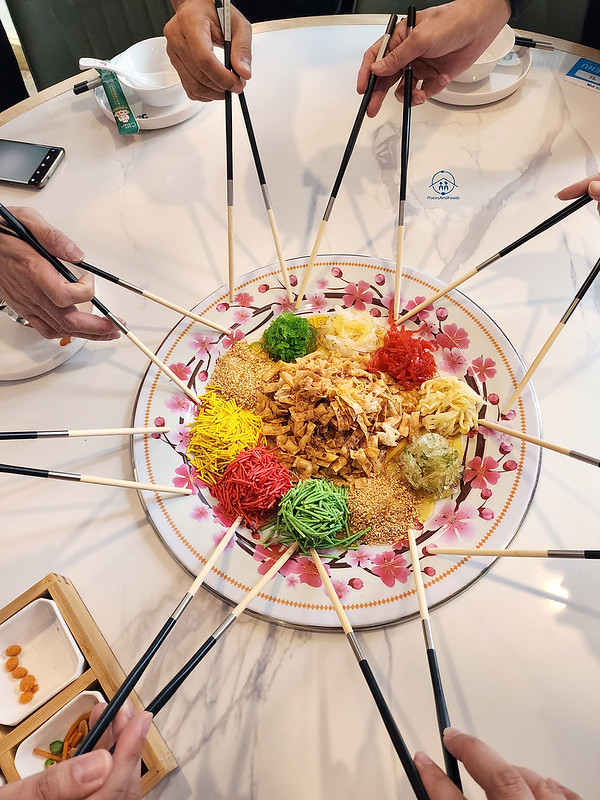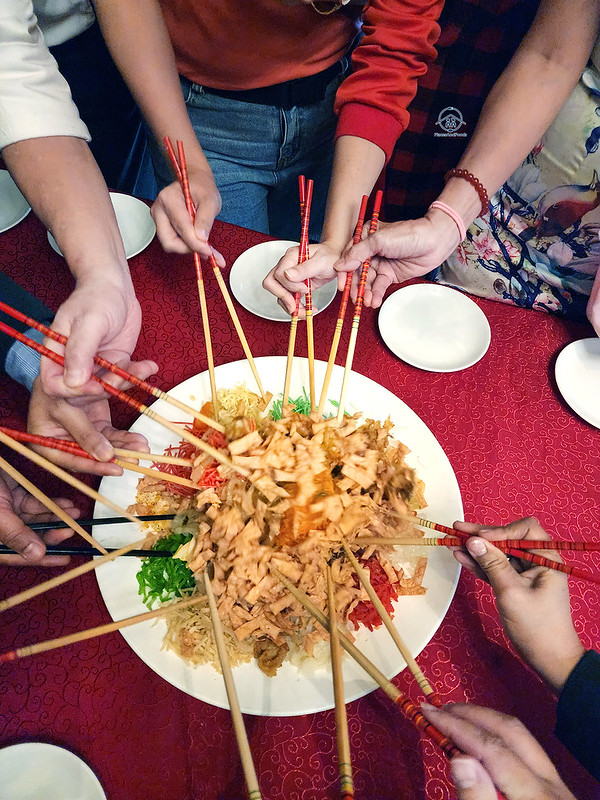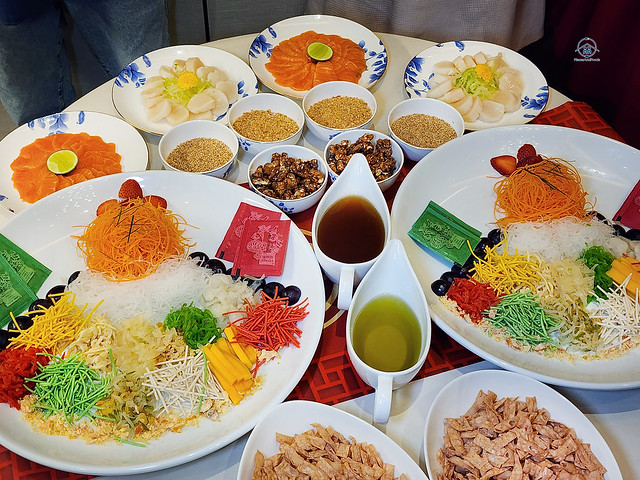Unveiling the Mystery of Malaysia and Singapore’s Beloved Yu Sheng
Unveiling the Mystery of Malaysia and Singapore’s Beloved Yu Sheng
Where is the origins of Yu Sheng or Yee Shang? Before we head into that question, please take note that this story is generated by Google’s AI. Of course, we did some editing of the names as it is not accurate. Now, let’s unveil the mystery of Malaysia and Singapore’s beloved Yu Sheng according to Google’s AI.
Yu Sheng, the vibrantly colored salad synonymous with Lunar New Year celebrations in Malaysia and Singapore, bursts with more than just deliciousness. It holds a history as intriguing as its diverse ingredients, leaving many to wonder: where did this iconic dish originate? Join us on a culinary journey to uncover the fascinating origins of Yu Sheng!
Tangled Tales of Two Traditions:
While both Malaysia and Singapore proudly claim Yu Sheng as their own, both acknowledge its roots might lie in Guangdong, China. Here, a simple dish existed called yú sheng, translating to “raw fish,” featuring raw fish, vegetables, and oil. This humble ancestor laid the foundation for the Yu Sheng we know and love.
The Malaysian Mastermind:
Fast forward to Seremban, Malaysia, in the 1950s, where restaurateur Loke Ching Fatt emerges as a key figure and he is a relative of Malaysia’s transport minister Anthony Loke. He revolutionized the Chinese dish, creating the Sup Kum Yee Sang we cherish today. This vibrant version boasted a staggering 30 ingredients, weaving together shredded vegetables, fruits, crackers, and various sauces, resulting in a symphony of textures and flavors.
Across the Causeway:
Singapore’s claim to Yu Sheng’s origin shines a spotlight on Teochew immigrants. They adapted the Chinese dish, incorporating their own cultural influences, like pomelo and jellyfish. Their version, known as lo hei, translates to “toss up good fortune,” emphasizing the communal act of tossing the salad for prosperity.
A Melting Pot of Influences:
Regardless of its exact origin, Yu Sheng stands as a testament to the rich tapestry of culinary exchange. It highlights the intermingling of Chinese traditions with Malaysian and Singaporean influences, resulting in a unique and beloved dish.
More Than Just a Salad:
Yu Sheng’s significance goes beyond its deliciousness. The tossing ritual symbolizes ushering in good fortune, prosperity, and abundance for the new year. Each ingredient carries meaning, with the fish representing abundance, the shredded vegetables symbolizing longevity, and the crackers signifying wealth.
A Legacy of Flavor:
Whether you savor it in Malaysia, Singapore, or beyond, Yu Sheng serves as a reminder of the rich cultural tapestry woven through food. So, the next time you toss this vibrant salad, remember the journey it took, the stories it holds, and the shared traditions it represents. Let each bite be a celebration of cultural exchange, culinary creativity, and the enduring spirit of good fortune!
Remember:
- While both Malaysia and Singapore have strong claims to Yu Sheng’s origin, its roots likely trace back to Guangdong, China.
- Loke Yew, a Malaysian restaurateur, played a significant role in shaping the Yu Sheng we know today.
- The dish incorporates influences from various cultures, highlighting the beauty of culinary exchange.
- Yu Sheng is more than just a salad; it represents hope, prosperity, and shared traditions.
Believe it or not, the above story is completely generated by Google’s AI. The accuracy of the story is almost perfect except the claim that it is from Guangdong China.
Anyhow, gather your loved ones, toss your Yu Sheng high, and savor the taste of history and cultural exchange on your plate! We wish everyone good wealth, health and happy always!
For advertisements, please contact us at placesandfoods@gmail.com








